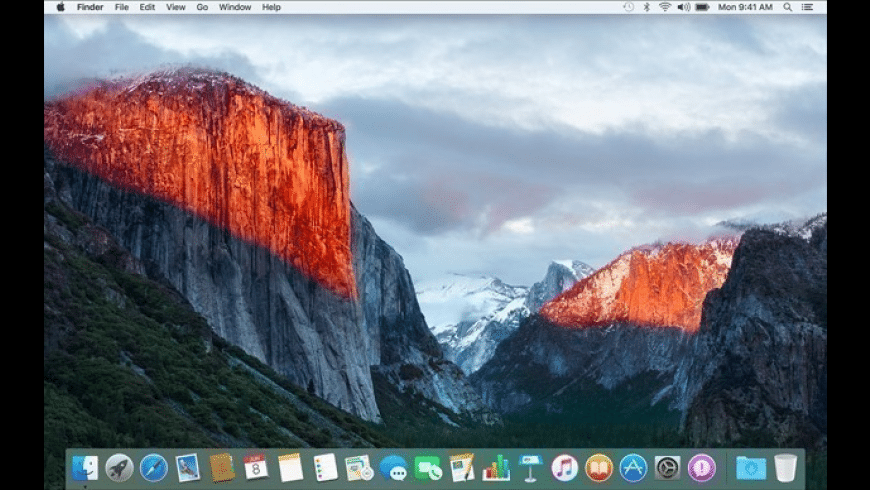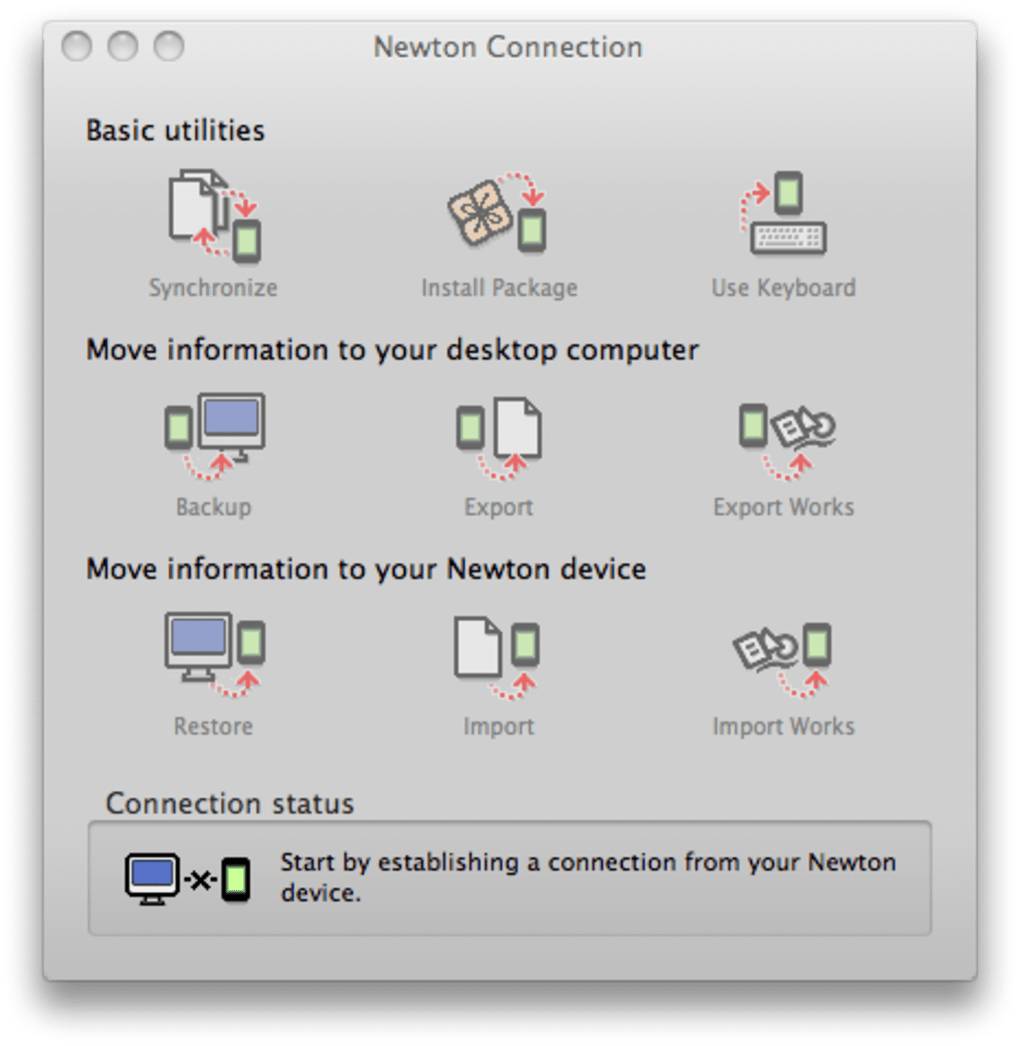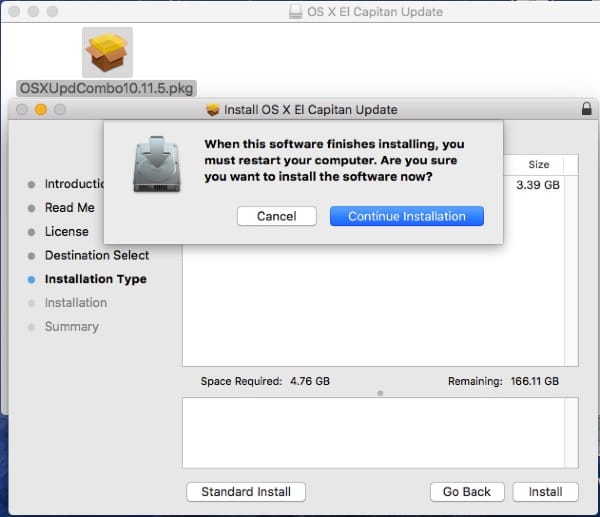Download and install the OS X El Capitan 10.11.6 Combo Update or 10.12.6 Combo Update or Download macOS High Sierra 10.13.6 Combo Update as needed. Reinstall OS X by booting from the Recovery HD using the Command and R keys. When the Utility Menu appears select Reinstall OS X then click on the Continue button. Erase and Install OS X Restart. For the first time, macOS High Sierra was announced at the Worldwide Developer Conference 2017. Finally, the full version was released on September 25, 2017. The name of the macOS High Sierra was taken from a beautiful place located in America California. Also, macOS High Sierra’s latest version code is 10.13.6.
A Troubleshooting Procedure that may Fix Problems with macOS El Capitan or LaterAdobe illustrator cs6 free. download full.
The Combo in your screen shot says 10.11? Something is amiss. I miss read it on first take. What happens if you select the Macintosh HD? I would try later for 10.11.6 combo. Download OS X El Capitan 10.11.6 Combo Update. Use this link to open the El Capitan page on the App Store: Get OS X El Capitan. Click the Download button on the El Capitan page. A file named Install OS X El Capitan downloads to your Applications folder. After download is complete, the installer opens automatically. Click Continue and follow the onscreen instructions.
You should try each, one at a time, then test to see if the problem is fixed before going on to the next.
The update also includes a number of security updates that Apple details in a release note. How to install the macOS High Sierra 10.13.6 update Before updating, perform a backup of you Mac.
Be sure to backup your files before proceeding if possible.
Macos High Sierra 10.13 Update
- Shutdown the computer, wait 30 seconds, restart the computer.
- Disconnect all third-party peripherals.
- Reset your Startup Disk and Sound preferences.
- Start the computer in Safe Mode. Test in safe mode to see if the problem persists, then restart normally. Also, see Use safe mode to isolate issues with your Mac - Apple Support and Playing Safe- what does Safe mode do?.
- Use Apple Hardware Test to see if there is any hardware malfunction. How to invoke and interpret the Apple hardware tests - CNET.
- Repair the disk by booting from the Recovery HD. Immediately after the chime hold down the Command and Rkeys until the Utility Menu appears. Choose Disk Utility and click on the Continue button. Select the indented (usually, Macintosh HD) volume entry from the side list. Click on the First Aid button in the toolbar. Wait for the Done button to appear. Quit Disk Utility and return to the Utility Menu. Restart the computer from the Apple Menu.
- Repair permissions on the Home folder: Resolve issues caused by changing the permissions of items in your home folder.
- Create a New User Account Open Users & Groups preferences. Click on the lock icon and enter your Admin password when prompted. On the left under Current User click on the Add [+] button under Login Options. Setup a new Admin user account. Upon completion log out of your current account then log into the new account. If your problems cease, then consider switching to the new account and transferring your files to it - Transferring files from one User Account to another.
- Download and install the OS X El Capitan 10.11.6 Combo Update or 10.12.6 Combo Update or Download macOS High Sierra 10.13.6 Combo Update as needed.
- Reinstall OS X by booting from the Recovery HD using the Command and R keys. When the Utility Menu appears select Reinstall OS X then click on the Continue button.
- Erase and Install OS X Restart the computer. Immediately after the chime hold down the CommandandRkeys until the Apple logo appears. When the Utility Menu appears:
- Select Disk Utility from the Utility Menu and click on Continue button.
- When Disk Utility loads select the drive (out-dented entry) from the Device list.
- Click on the Erase icon in Disk Utility's toolbar. A panel will drop down.
- Set the Format type to APFS (for SSDs only) or Mac OS Extended (Journaled.)
- Click on the Apply button, then wait for the Done button to activate and click on it.
- Quit Disk Utility and return to the Utility Menu.
- Select Reinstall OS X and click on the Continue button.
14. If none of the above helps then see How to Downgrade macOS High Sierra and macOS Reversion- How to Downgrade from High Sierra.
15. If you get here without success then make an appointment at the Apple Genius Bar for service. If you need to find an Apple Store - Find a Store - Apple.
Jul 18, 2018 2:52 PM
EliteMacx86
Download Macos High Sierra 10.13 Update
Administrator

- Joined
- Jul 22, 2018
- Motherboard
- GIGABYTE Z370 AROUS GAMING 3
- CPU
- Intel Core i9 9900K
- Graphics
- 2xAMD RX 580 8GB
- OS X/macOS
- 11.0 (Beta)
- Bootloader
- OpenCore
- Mac
- MacBook Pro
- Mobile Phone
- Android, iOS
The macOS High Sierra 10.13.6 update adds AirPlay 2 multi-room audio support for iTunes and improves the stability and security of your Mac. This update is recommended for all users.
AirPlay 2 for iTunes
Control your home audio system and AirPlay 2-enabled speakers throughout your house
Play music at the same time on multiple AirPlay 2-enabled speakers in your house, all in sync
Other improvements and fixes
Fixes an issue that may prevent Photos from recognizing AVCHD media from some cameras
Fixes an issue that may prevent Mail users from moving a message from Gmail to another account
Direct update download links form Apple.com
macOS High Sierra 10.13.6 Update (1.88GB)
macOS High Sierra 10.13.3 Combo Update (2.49GB)
Performing an El Capitan-to-Sierra upgrade is easy. Although it does not come like a push-one-button-and-proceed method, the truth is it’s quite close.
Requirements for Upgrading from El Capitan to Sierra
Before we proceed with our step-by-step guide, allow us to answer an important question that some Mac users have in mind: “Can an old Mac still upgrade to Sierra?”
The answer is, of course, a YES. However, there are a few minimum requirements that need to be met, such as the following:
Combo Update El Capitan Free
- 2 GB RAM
- 8 GB Storage Space
- Mac Models: Late 2009 iMac, 2009 MacBook, 2010 MacBook Pro, 2010 MacBook Air, 2010 Mac Mini, 2010 Mac Pro
Once you are certain that your Mac has met the requirements above, make sure you have backed up your Mac. This backup will come in handy in case something comes up in the process of upgrading to High Sierra.
Pro Tip: Scan your Mac for performance issues, junk files, harmful apps, and security threats
that can cause system issues or slow performance.
Combo Update El Capitan Update
Special offer. About Outbyte, uninstall instructions, EULA, Privacy Policy.
Upgrading from El Capitan to Sierra
After backing up your Mac’s important files and folders, it’s time to get started. Here’s how to upgrade from El Capitan to Sierra.
1. Download High Sierra from the App Store.
High Sierra is available for download from the App Store. To get it, follow these steps:
- Open the Mac App Store by simply clicking on the App Store icon in the dock.
- Navigate to the Featured tab.
- Find macOS Sierra in the rightmost column and click on it.
- Click Download.
- At this point, the download will start. It may take long, especially if it’s your first time accessing the App Store. Just be patient.
- Once the download is completed, the installer should launch automatically.
2. Start the Upgrade.
With the High Sierra installer ready, it’s time to actually install it. Here’s how:
- The High Sierra installer should now be open on your Mac. If you have accidentally quit it, you can restart it by going to the Applications folder and double-clicking on the installer.
- Click Continue to proceed.
- Press on the Agree button to agree with the software licensing terms and agreements flashed on your screen.
- Click on the Agree button again to verify your action.
- Hit Install.
- A new dialog box will pop up, requiring you to input your administrator password. Provide that information and click Add Helper.
- The High Sierra installer will begin copying the system files to the new target drive. The progress will show in a new window.
- As soon as all the system files are copied, your Mac will automatically reboot. Don’t panic if the restart process takes a while. It only means your Mac is coping with the installation process.
3. Utilize the Setup Assistant to Complete the Installation.
Your Mac should already be finished with the basic installation process. The next thing you should do is run the Setup Assistant to configure some important macOS High Sierra options and settings.
Take note, though, that if your Mac is configured to ask for your login details, a normal login window will show. Provide your login credentials so you can proceed with the following steps:
- The Setup Assistant starts off by asking you for your Apple ID details. If you wish to leave everything as it is, click the Set Up Later option.
- Let the Setup Assistant configure all vital services that need your Apple ID credentials. Simply provide your Apple ID password and hit Continue.
- Click Agree if you agree with the Terms and Conditions flashed on your screen.
- You will be asked to verify your action again. To continue, click Agree again.
- The Setup Assistant should then continue with configuring your iCloud account information. It will also ask you whether you want to set up iCloud Keychain. You can just skip it to avoid confusing yourself.
- Next, there will be options displayed on your screen regarding how you wish to use iCloud for storing images and documents. Choose which of them apply to you by clicking on the boxes next to each one of them:
- Store Files from Documents and Desktop in iCloud Drive – This option will allow you to automatically upload files from your Desktop and Documents folder to your iCloud Drive. Be mindful, though, that Apple only offers a limited amount of storage space for free users. If all this free space is exhausted, you will be asked to purchase additional storage.
- Store Photos and Videos in iCloud Photo Library – This will let you upload videos and images from your Photo Library to iCloud. As with the first option, you have to remember that you only have limited free storage space.
- Hit Continue.
- Wait for the Setup Assistant to finish the setup process.
- You will know when it’s done because you will be taken to your desktop.
Summary

We hope you found this guide useful. But before you download macOS Sierra and perform an upgrade, do not forget to clean up your Mac with a reliable Mac repair tool first. This way, you can ensure that nothing comes your way and keeps you from making the most of High Sierra.

Combo Update El Capitan Mac
Did we miss some important steps above? Do you know other, easier methods to upgrade from El Capitan from Sierra? We’d love to know. Comment on them below!